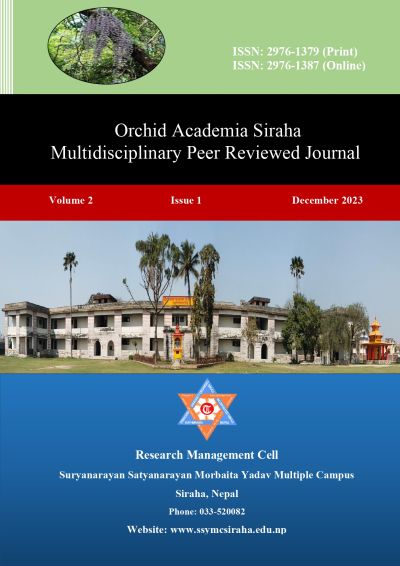Effects of Digital Resources in Science Teaching and Learning in Secondary Schools: A Study in Siraha District
DOI:
https://doi.org/10.3126/oas.v2i1.65620Keywords:
competency, digital resources, paradigm shift, pedagogy, science teachingAbstract
The availability of digital resources has increased dramatically in school setting. The main objective of the study is to find out the use of digital resources in the science classrooms and its pedagogical impact on school-level science teaching and learning. The study followed descriptive design. For the study, 12 secondary (community-6, institutional-6) among 17 secondary schools that run Class 11 and 12 in science stream were randomly selected. All science teacher including lab instructors were the participants of the study. Observation forms and questionnaires were used as research tool. Percentage and Spearman’s correlation test were performed by using SPSS version 20. The results showed that digital resources were generally available in the classrooms but were not widely used. Furthermore, the science teachers who had excellent knowledge regarding digital resources and abilities had better performance than those with less knowledge and skill regarding digital resources as they work less aware of pedagogical implications of digital resources. Science teaching impacts were found to be significantly influenced by teachers’ age, experience, information communication and technology certifications, and teaching strategies. In the end, it was discovered that competencies of digital resources directly improved science teaching and learning results, enabling a paradigm shift away from conventional teaching techniques.
Downloads
Downloads
Published
How to Cite
Issue
Section
License
Copyright (c) 2023 RMC, SSMYMC, Siraha

This work is licensed under a Creative Commons Attribution 4.0 International License.
This license allows reusers to distribute, remix, adapt, and build upon the material in any medium or format, so long as attribution is given to the creator. The license allows for commercial use.




